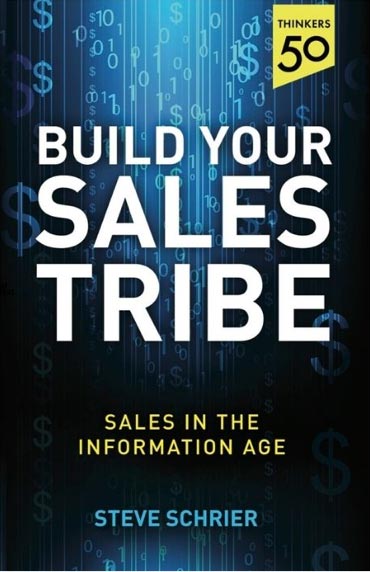
This post is a companion post to the Build Your Sales Tribe Book section on Customer Relationship Management systems (CRM). If you own the book, thanks for visiting. If you don’t own the book, find out more here: www.salestribe.co.uk
In the Build Your Sales Tribe book, we discuss confidence. Confidence is a trait that is necessary for all good sales people. Because confidence changes a person’s body language and their whole manner of approach.
Confidence to sell
Selling often involves approaching relative strangers and asking them questions to start the process of selling. Or it can involve changing your relationship with people you know already. It is essential your company is set-up to support the people to provide them with that confidence.
So where does this confidence come from and how do you make sure your people have the most of it?
There needs to be some belief in the sales person for them to establish this confidence. The confidence to sell. This confidence comes from several things in a sales context here are 5 of the top ones:
1 – Permission to make intelligent mistakes
One of the key building blocks in the confidence to sell is the confidence to make assumptions and mistakes. Working through the process to convert suspect buyers into potential prospects through fitting a customer with an ideal customer profile, involves making assumptions and clarifying and correcting those assumptions through questioning the customer. Assumptions need to be made first and then the true situation of a customer is uncovered over time.
Salespeople should be expected by management to make those assumptions and to correct them as they go as part of the process.
This has never been more important than now – business models and situations are changing massively and your assumptions will be wrong more often than they were before.
Simple, basic assumption: You do your research into a company and you think the business unit you are targeting, which matches your ideal customer profile, generates XXm in revenue. Through questioning the customer, you find out isn’t quite what it seems. What does that mean now?
You assume that a customer has X.Y,Z, in resources and will deploy them to deliver your project successfully in unison with you. But find out that this will not happen just as you are about to sign a contract. How do you move forward?
Anticipate these up front. When you get surprised, have the mechanisms in place to adjust accordingly and maintain confidence. Product or service fit. The belief that the product or service being sold truly meets the needs of a customer. Ensure your people are on board with identifying these needs and how you will fill them. This sounds really obvious but it is amazing how often you don’t see it. DEEP knowledge is required here and the company needs to be set-up to make sure the right people have it.
2 – Market knowledge
Knowledge of the sales people of their market in order to establish credibility with prospective buyer. As we have discussed elsewhere, buying in this age is complicated. The people you have engaging with customers need to establish themself as a questioner in order to ask the right questions – this helps present themselves as credible navigators of the market. This requires confidence that they are experts. Invest in the resources, feedback and discussion that give the right people this knowledge so they are the experts they claim.
3 – Delivery
The ability for the supplier organisation to deliver the product or service once it has signed up to the commitment. Sales people just want to get the order and chuck it over the fence for delivery no? In the modern world that doesn’t work. There has to be delivery and this needs to be demonstrated by all involved so that it instils confidence – this is a culture.
4 – Deal with rejection
This WILL happen and the more shared experience the company has that deals with this, the more it can hone it’s processes to cope with it and not harm it’s confidence. If confidence is damaged, it will affect results. Employ post-mortem procedures to examine where things are not working and correct them regularly.
5 – How does confidence fit with your organisation?
Some people have a natural energy, positivity and confidence level that comes with their personality and background. Whilst this may be the ‘common’ view of a someone who makes a good sales person, it generally means nothing if that person can’t also connect it with the additional types of confidence above.
If a sales person is unable to establish credibility with a prospective buyer, it will just lead to a lot of ‘shallow’ conversations without the ability to take it further and go through the actual process of selling.
Confidence Challenges and Developing confidence.
Here is something to try with your others in the organisation, not just the sales people.
Confidence or ‘Comfort’ Challenges, are challenges which generally take people out of their comfort zone for a period to help them get over their fears. This helps them to deal with the fear of rejection which someone may have to overcome to be a good sales person and develop their confidence.
Doing these can sometime be daunting so it is a good idea to do them together as a team and make it fun.
There are many of these, but here are my five favourite ones:
- Lie down in a crowded place for thirty seconds at a time. If someone asks you if you are okay then you can say ‘yes’, but make sure you stay there for the full thirty seconds.
- Choose a day when you will be in a busy area, then whenever you buy anything, including food or coffee, try to negotiate with the person selling it to get a discount. Any discount is good, but try for 20%. This is especially good if there is a long queue behind you.
- Sign up to perform a public-speaking engagement on something non-work related; something you have never spoken about publicly before. The speech should be for at least five minutes to a decent size audience (50+).
- Say ‘yes’ to everything for a week. (This one also teaches you how important it can be to say ‘no’ sometimes). Extra rules can be added here for personal safety!
- Look people in the eye when you are talking to them.
Further resources:
These resources just deal with the broader confidence level, they don’t replace the work that needs to be done within an organisation to instill a ‘confidence to sell’ which, frankly is in the power of anyone who wants it.
- This is quite a good Tedx talk here about how someone became more confident.
- The Four Hour Work Week by Tim Ferriss. A lot of work on confidence challenges here.
- I love this post by Tony Robbins on confidence who really gets under the skin of it for me. https://www.tonyrobbins.com/building-confidence/how-to-be-confident/
- Confidence to Sell is nothing if all the other pieces are not around it. Build Your Sales Tribe is the book on all those other pieces.
Books on confidence:







